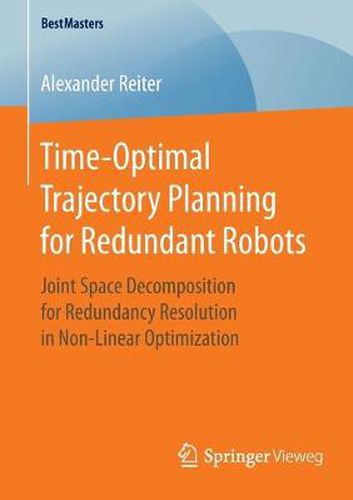Readings Newsletter
Become a Readings Member to make your shopping experience even easier.
Sign in or sign up for free!
You’re not far away from qualifying for FREE standard shipping within Australia
You’ve qualified for FREE standard shipping within Australia
The cart is loading…






This title is printed to order. This book may have been self-published. If so, we cannot guarantee the quality of the content. In the main most books will have gone through the editing process however some may not. We therefore suggest that you be aware of this before ordering this book. If in doubt check either the author or publisher’s details as we are unable to accept any returns unless they are faulty. Please contact us if you have any questions.
This master’s thesis presents a novel approach to finding trajectories with minimal end time for kinematically redundant manipulators. Emphasis is given to a general applicability of the developed method to industrial tasks such as gluing or welding. Minimum-time trajectories may yield economic advantages as a shorter trajectory duration results in a lower task cycle time. Whereas kinematically redundant manipulators possess increased dexterity, compared to conventional non-redundant manipulators, their inverse kinematics is not unique and requires further treatment. In this work a joint space decomposition approach is introduced that takes advantage of the closed form inverse kinematics solution of non-redundant robots. Kinematic redundancy can be fully exploited to achieve minimum-time trajectories for prescribed end-effector paths.
$9.00 standard shipping within Australia
FREE standard shipping within Australia for orders over $100.00
Express & International shipping calculated at checkout
This title is printed to order. This book may have been self-published. If so, we cannot guarantee the quality of the content. In the main most books will have gone through the editing process however some may not. We therefore suggest that you be aware of this before ordering this book. If in doubt check either the author or publisher’s details as we are unable to accept any returns unless they are faulty. Please contact us if you have any questions.
This master’s thesis presents a novel approach to finding trajectories with minimal end time for kinematically redundant manipulators. Emphasis is given to a general applicability of the developed method to industrial tasks such as gluing or welding. Minimum-time trajectories may yield economic advantages as a shorter trajectory duration results in a lower task cycle time. Whereas kinematically redundant manipulators possess increased dexterity, compared to conventional non-redundant manipulators, their inverse kinematics is not unique and requires further treatment. In this work a joint space decomposition approach is introduced that takes advantage of the closed form inverse kinematics solution of non-redundant robots. Kinematic redundancy can be fully exploited to achieve minimum-time trajectories for prescribed end-effector paths.